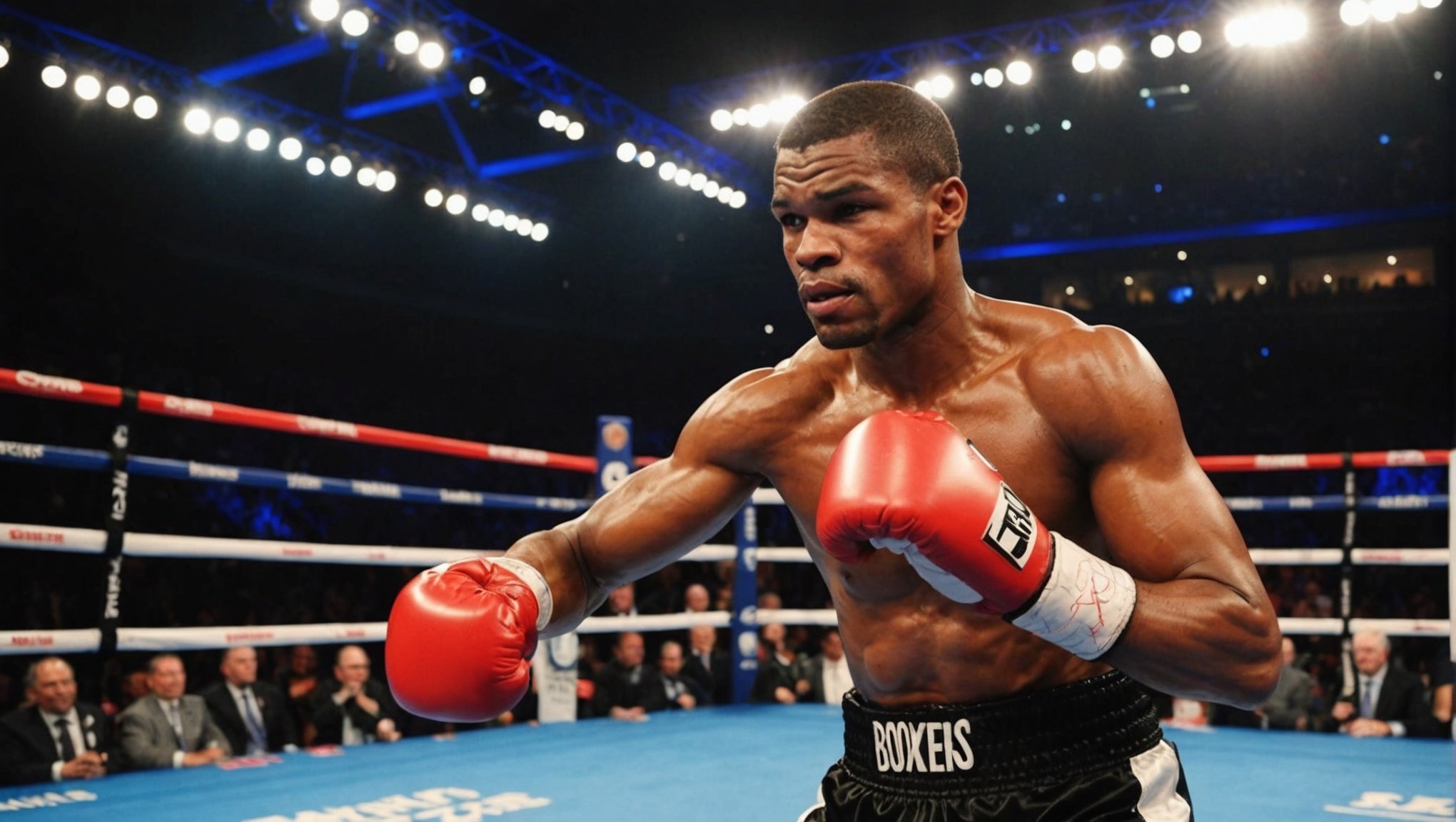Importance of Mental Resilience in Boxing
In the world of boxing, mental resilience plays a crucial role in the success of athletes. While physical training is essential, a strong boxing mindset often sets apart great boxers from the rest. Mental resilience involves the ability to stay focused, handle pressure, and recover quickly from setbacks. This mental fortitude is crucial during fight preparation and in the ring, where every decision can influence the outcome.
Top athletes like Muhammad Ali and Mike Tyson have often highlighted the significance of the mental aspect in their training regimes. Ali famously stated that his fights were often won long before he stepped into the ring, showcasing how critical mental resilience can be for performance. Similarly, Tyson credited much of his success to his mental conditioning, which allowed him to maintain focus and confidence under intense pressure.
Have you seen this : Top Drills to Boost Ice Hockey Goalies” Peripheral Vision Skills
Understanding the distinction between mental resilience and physical training is vital for aspiring boxers. While physical training enhances strength and skill, mental resilience builds perseverance and adaptability. This combination forms a comprehensive approach to fight preparation, ensuring boxers are prepared for both the physical and psychological demands of the sport.
Visualization Techniques for Boxers
Harnessing visualization and mental imagery can significantly uplift a boxer’s performance. Unlike just physical training, it involves creating mental movies of successful movements and fights.
This might interest you : Mastering Table Tennis: Essential Techniques to Enhance Your Hand-Eye Coordination
Defining Visualization in Sports
Visualization refers to the process of mentally rehearsing actions and scenarios to improve performance. In boxing, visualizing each punch, dodge, or sequence helps an athlete anticipate situations and respond effectively. This mental rehearsal bridges the gap from practice to actual performance, allowing boxers to feel more in control.
Steps to Effective Visualization
To make the most of visualization:
- Find a quiet space to minimize distractions.
- Close your eyes and mentally rehearse match scenarios.
- Include all senses; imagine the sounds of the match, the feel of the gloves, and even the crowd’s cheers.
- Consistently practice, aligning your mental imagery with your physical routine.
Case Studies of Successful Visualization
Many professional athletes credit visualization with enhancing their results. Some boxers use visualization to mentally practice before matches, reporting increased confidence. For instance, athletes often share their insights, underscoring its role in their preparedness. These real-world successes highlight visualization as a critical tool for achieving peak performance in the ring.
Utilizing Affirmations for Confidence
Embracing affirmations can significantly enhance a boxer’s confidence by cultivating a positive mindset. This form of self-talk plays a vital role in shaping not just an athlete’s cognition but also their performance in the ring.
Crafting Effective Affirmations
Creating impactful affirmations involves focusing on positive language and personal goals. Start by identifying specific areas where confidence is needed, and formulate statements that reflect success and self-belief, e.g., “I am strong and capable.” Consistently using present tense and powerful words ensures these affirmations resonate deeply.
Daily Affirmation Practices
Incorporating affirmations into daily routines helps fortify a positive mindset. Practising them every morning or before training can set the tone for the day. Repetition, visualization, and emotional engagement amplify their effectiveness, potentially transforming internal dialogue.
Real-life Examples of Affirmations in Boxing
Prominent boxers integrate affirmations into their training. This includes visualizing success and repeatedly affirming their skills. For example, Muhammad Ali famously used self-talk to reinforce his confidence, claiming, “I am the greatest.” These practices reflect how affirmations can be tailored to individual needs, serving as an indispensable tool in any boxer’s arsenal.
Strategies for Managing Pre-Fight Anxiety
Combat sports athletes often face pre-fight nerves, which can significantly influence performance and decision-making. Recognizing the symptoms of pre-fight anxiety is crucial for effective anxiety management.
Recognizing Symptoms of Pre-Fight Anxiety
Athletes might experience increased heart rate, sweating, or racing thoughts before a fight. Being aware of these symptoms allows boxers to deploy relaxation techniques early, minimising the impact on performance.
Breathing and Relaxation Methods
Controlled breathing is a powerful method to counteract pre-fight anxiety. Boxers can engage in diaphragmatic breathing, inhaling deeply through the nose, holding the breath for a moment, and exhaling slowly through the mouth. This technique helps in reducing heart rate and induces a sense of calm.
Incorporating progressive muscle relaxation can also be beneficial. This involves tensing and then slowly releasing each muscle group, promoting overall relaxation and enabling fighters to approach their matches with steadier nerves.
Mindfulness Practices for Boxers
Mindfulness practices are an effective strategy for anxiety management. They encourage athletes to remain present and focused, reducing pre-fight nerves. Techniques like meditation empower boxers to hone focus during high-pressure moments. Emphasising breath and body awareness in mindfulness exercises aids in grounding the athlete, providing a clear mental space crucial for performance.
Goal-Setting for Success
In the realm of personal growth and achievement, goal-setting acts as a foundational component, propelling you towards success. It serves as a map to navigate through your aspirations, especially when delineated into performance goals and achievement strategies.
Importance of Clear Goals in Training
Clear goals in training significantly boost motivation and focus. By establishing explicit objectives, athletes can concentrate on precise targets. Clear goals offer a framework to monitor progress and adjust tactics as necessary to optimise results.
Short-term vs Long-term Goal Strategies
Understanding the distinction between short-term and long-term goal strategies is crucial. Short-term goals, achievable within a brief timeframe, serve as stepping stones to more extensive endeavours. In contrast, long-term goals require sustained effort, perseverance, and a strategic plan to maintain engagement and direction over time.
Adjusting Goals Based on Performance
It’s essential to adjust goals based on performance insights. Regular assessments against set performance goals indicate when recalibration is necessary. This dynamic process ensures continuous improvement and helps in aligning efforts towards achievement strategies that are realistic yet challenging.
Expert Opinions and Insights
To excel in any sport, having the right mental strategies is as crucial as physical training. This section delves into the wisdom shared by experts in sports psychology, insights from professional boxers, and the invaluable support coaches provide.
Interviews with Sports Psychologists
Sports psychologists emphasize the importance of mental resilience and focus. They’re adept at using psychological coaching to craft strategies that enhance a boxer’s mental fortitude. Techniques like visualization and mindfulness are often recommended for cultivating a strong mindset.
Insights from Professional Boxers
Professional boxers often share that mental preparation is vital for success in the ring. They speak of using stress management techniques and goal-setting to remain calm and focused. These insights highlight the necessity of tailoring mental preparation to each boxer’s unique needs and strengths.
The Role of Coaches in Mental Preparation
A coach’s role extends beyond physical training. They’re instrumental in offering professional advice that helps fighters hone their psychological skills. Coaches often employ expert insights to motivate and build confidence in boxers, ensuring they are mentally prepared for the challenges ahead. This highlights the essential interplay between physical prowess and psychological readiness in boxing.
Practical Exercises for Enhancing Mental Strength
Strengthening mental fortitude is crucial for athletes aiming to improve their performance. Consistent mental exercises and drills can significantly contribute to mental strength development.
Daily Mental Drills for Boxers
Boxers can start by incorporating daily visualisation exercises into their training routine. Visualising successful moves and outcomes enhances focus and resilience under pressure. Mindfulness practices, such as short meditation sessions, aid in maintaining composure and can be easily included in cooldown routines.
Group Exercises to Build Team Mentality
Engaging in group mental drills fosters a strong, unified team dynamic. Activities like role-playing scenarios, where team members switch roles and assume different functions, can improve communication skills and collective problem-solving. These activities not only bond team members but also teach them how to rely on each other during competitive situations.
Review and Adaptation of Mental Strategies
It is vital to periodically re-evaluate and adapt mental strategies. This ensures that the methods being utilised remain relevant to current goals and challenges. Regular feedback sessions, conducted bi-weekly or monthly, can help identify which strategies are effective and which require adjustment. By proactively adjusting these methods, athletes and teams can maintain peak mental performance levels.


















